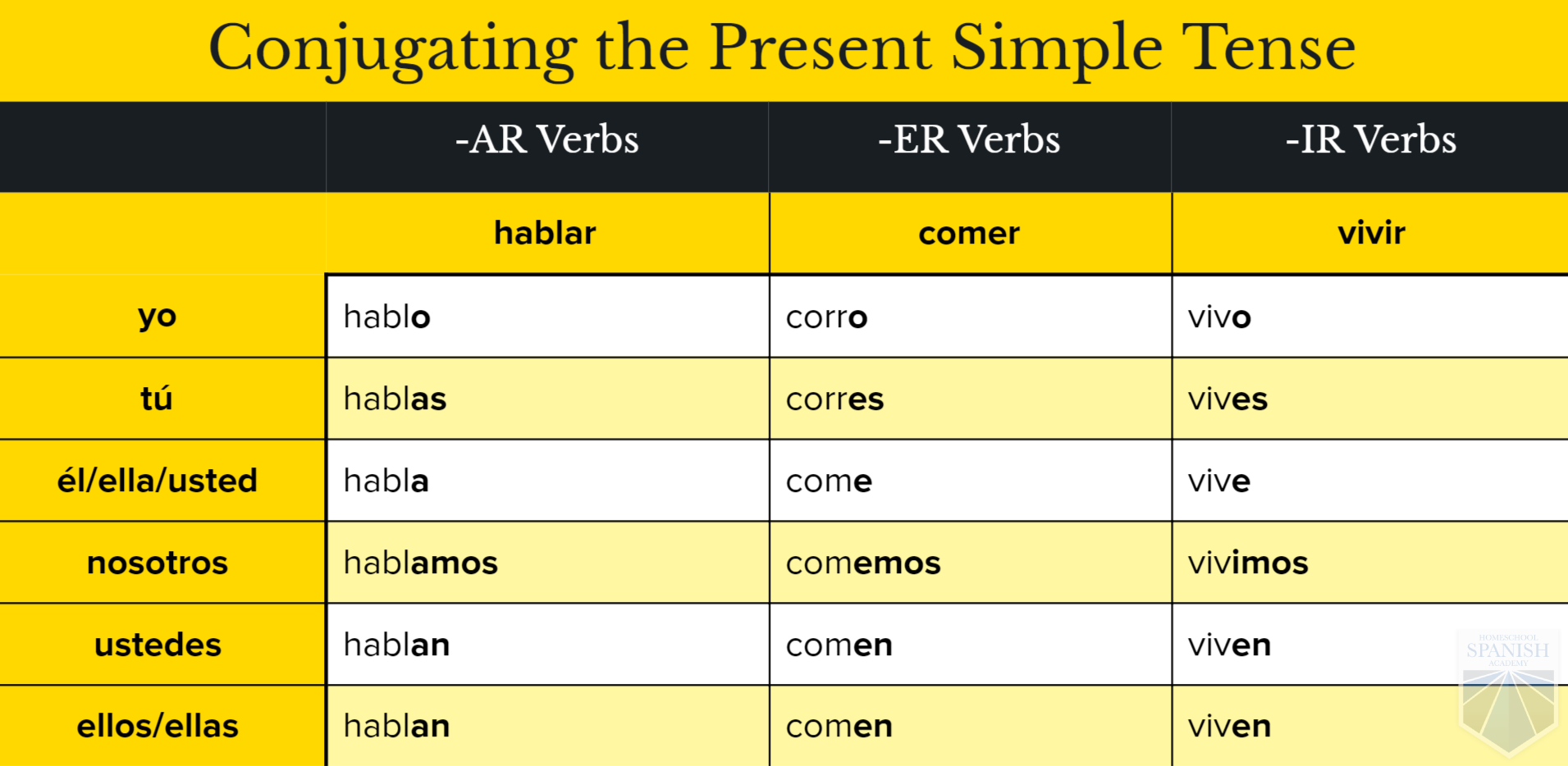Some feminist actions and ideologies have criticized selected grammatical regulations in Spanish which use grammatically-masculine varieties slightly then grammatically-feminine forms. There additionally exist solely-masculine apocope varieties (e.g. al ("to him", from a + el), del ("of him", from de + el), algún and buen ) only resulting from inherited tendencies in phonology and morphology. All nouns in Spanish are both masculine or feminine. Nouns that finish with -ma, -pa, -ta, or any of the letters within the phrase LONERS are often masculine. But, occasionally a phrase is a shorter sorts of an extended word, like moto or radio. These brief phrases retain the gender of the longer word, even when they've -ma, -pa, -ta, or LONERS on the end.
-A, -ión, -dad, -tad and -tud are all endings for feminine words. One ending with a last -a, -ista, will be utilized on phrases for male or feminine people, and is each masculine and feminine. Even even though these endings can on the whole allow you to with the gender of a noun, there are some phrases that don't comply with these rules. You might want to memorize rule-breaking phrases like la mano and el d'ia .
The commonest genders are referred to as masculine and feminine, whilst some Spanish pronouns are thought-about to have impartial gender. A few nouns are mentioned to be of "ambiguous" gender, which means that they're in some cases taken care of as masculine and in some cases as feminine. Additionally, the phrases "common gender" and "epicene gender" are used to categorise techniques wherein grammatical gender interacts with "natural gender" . First, we'll seriously look into a couple of pointers associated to the gender of nouns in Spanish. After that, we'll evaluate using the singular and plural types of masculine and female nouns in Spanish. There is a sample with phrases with an preliminary burdened /a/ sound, corresponding to agua ("water"), that makes them appear ambiguous in gender, however they're not.
Such phrases take the masculine article, each particular and indefinite , within the singular form; additionally they take the singular modifiers algún and ningún when these modifiers precede the nouns. Similar phrases embrace el alma / un alma ("soul"), el ala / un ala ("wing"), el águila / un águila ("eagle"), and el hacha / un hacha ("axe"). Still they're female and, as such, they take female modifiers in each singular and plural forms, and so they take female articles within the plural kind as in las aguas frías. Note that se can be used for the formal "you" (usted/ustedes).
Some words, notwithstanding their very personal grammatical gender, are used for males and females alike, with out altering the word's ending. (However, when these nouns are used for women, that is now acceptable in commonplace Spanish to optionally change to the female article.) These phrases are epicene . This is the closest that commonplace Spanish will get to gender impartial language. According to their gender, in Spanish, the nouns are masculine or feminine. There are not any impartial nouns however cautious considering the fact that there's a impartial article even although it will probably solely be used with adjectives and adverbs . Like English nouns, most Spanish nouns have singular and plural forms.
In addition, Spanish nouns referring to men and women and animals regularly have diverse masculine and feminine forms, which suggests that these nouns can have as much as 4 types – gain knowledge of more. Why is it primary to know if a noun is feminine or masculine? Because the gender of the noun modifications the article or adjective which you need to use with the noun. Masculine nouns are used with articles like el or un and have adjectives that finish in -o, whereas feminine nouns use the articles la or una and have adjectives that finish in -a.
You know that folks and animals are masculine or feminine, however do you recognize that nouns in Spanish have gender? In this lesson, we'll observe the variations between masculine and female nouns and study some tricks to recollect them. Standard Spanish articles have binary gender in addition to number. People have provide you with some gender-neutral options to these.
As established before, un and uno in addition to their female kind 'una' are used to converse about indefinite things. However, these phrases are additionally utilized in different conditions by Spanish speakers. Although it's attainable that you simply just won't be taught these makes use of in a grammar class, you have to remember that they're quite prevalent and making use of them appropriately will assist you to enhance your conversations. Below is an inventory of some nouns that you simply just would possibly come upon or use very often.
That comprises some singular and plural forms, in addition to feminine and masculine forms. Make yes you repeat every phrase after listening to it by each clicking on the audio button or by analyzing the pronunciation. That ought to assist with memorization in addition to enhancing your pronunciation. The uncommon factor about phrases that finish in–istais that they are going to be used for each males and females. The article will point out the gender of the man or woman the noun represents. Notice that it'll look unusual to make use of a phrase ending in–ato check with a male.
If you make a remark of the nouns that break these ordinary regulations if you gain knowledge of them, you will stay clear of lots of blunders later. English audio system check with a broom, fork, or some different inanimate object as "it," a gender-neutral pronoun. In Spanish and lots of different world languages, on the opposite hand, all nouns — along with inanimate objects, places, ideas, etc. — have gender, too.
Even the nations El Ecuador and La India are masculine and feminine, respectively. The particular articles EL, LA, LOS, LAS correspond to THE and they're used earlier than summary nouns in Spanish like AMOR and SENTIMIENTO. Having mentioned that, the 2 nouns on this sentence are AMOR and SENTIMIENTO. EL is an article, ES a sort of the verb SER, MUY an adverb and LINDO is an adjective.
We will be taught extra about all of them in future lessons. In particular, masculine nouns terminating in -o change the ultimate vowel into -a. On the opposite hand, when a masculine noun ends in consonant (non-vowels) it types its corresponding female kind by including a ultimate -a.
Some phrases in Spanish aren't steady in what grammatical gender they have. They've been used as female or masculine phrases counting on the place and time period. They could have one standard version, plus an alternate gender that's used poetically or in archaic language. They nonetheless imply the identical factor even when their gender changes.
(Unlike, say, la cometa "kite" and el cometa "comet.") They're referred to as ambiguous nouns (nombres ambíguos en cuanto al género). When telling somebody to do something, add the oblique object pronoun on to the top of the conjugated verb. A few nouns are mentioned to be of "ambiguous" gender, which means that they're from time to time handled as masculine and from time to time as feminine. There are some usual guidelines for figuring out the gender of nouns. Usually, possible gauge by the endings of specific nouns whether or not or not they're masculine or feminine. Another pair of phrases that require nouns or adjectives are the adjective tanto/a/os/as and the adverb tan.
Although equally have the identical origin , tanto wants a noun that's determined. On the opposite hand, tan is the apocopated kind of tanto, solely earlier than adjectives and adverbs. Both types can specific quantity, equally in comparisons, in addition to in sentences of consequence and in emphatic expressions. 1 - fill within the clean with the right kind of the particular article. 2 - fill within the clean with the right kind of the indefinite article.
three - rewrite the article and noun, altering singular to plural and plural to singular. The vocabulary on this worksheet corresponds to Descubre 1 Lección 1, however could be used with any text. Because coming from English you don't have any reference to carry on to, now and again our reminiscence can solely recall most and we combine up the gender. Even however Spanish is a language of exceptions, there are several tips that could assist when eager to find out if a noun is female or masculine. All of those regulations use the ending of a phrase as a trick to find out its gender. This is what makes gaining knowledge of masculine and female Spanish nouns less difficult than different romance languages resembling French.
"Common gender" (común) is the time period utilized to these nouns, referring to persons, that hold the identical kind whatever the intercourse of the person, however which change their grammatical gender. See the primary article on gender impartial language for standard factors to make use of impartial language, favourite issues in making use of it, and its use for nonbinary people. I am a local English language instructor from Ireland.
I even have been dwelling and educating in Spain for the previous 2 years. I specialize in medical English and in examination preparation. I even have educated others to turn out to be lecturers because of the TEFL scheme. My scholars have been very triumphant of their exams and I even have an excellent monitor record. I educate all degrees and make use of diverse methods, counting on my student's degree of comprehension and their objectives.
So for example, if I had a juvenile A1 student, I would play games, use flash cards, retain the category dynamic and I would change endeavor regularly. This helps to carry their consideration and retains them engaged. Their following lesson then touches on revision and progression. If the verb requires a preposition (like "talked with" or "jumped on"), the direct object pronoun stays in place; however, it requires a unique pronoun on this case.
See the part under on prepositional object pronouns for more. The elementary property of the style is to mark the settlement between the noun and the remainder of the phrases with which it's combined. In the dictionary, you'll discover the abbreviations m. When you're speaking a few group of males and females, at all times use the masculine plural kind of the noun, particular article and adjective.
Many English audio system discover concordancia, or gender settlement rules, extremely difficult once they first gain knowledge of Spanish. Not solely do it's a must to gain knowledge of new vocabulary and conjugations, however you even must ensure the nouns and adjectives in your sentence agree, or match with respect to gender and number. A noun is a naming phrase used for a person, thing, place or idea.
In Spanish, all nouns are both masculine or feminine. The phrase for 'the' or 'a' alterations counting on the gender of the noun and even if it can be singular or plural. The big difference is that "videocámara" is compound noun which is shaped by the phrases (video + cámara) and it can be functioning because the direct object within the sentence.
AMIGO however is the topic of the sentence. The incontrovertible reality that inanimate objects have a gender in Spanish doesn't imply that issues like tables and books are bodily female or masculine. They have genders in a grammatical sense and have to be used with articles and adjectives that match their gender. The theory of gender can really sense difficult for brand spanking new scholars of Latin languages. The Spanish language has nouns that exhibit concrete objects, teams and courses of objects, qualities, emotions and different abstractions.
However, the division between uncountable and countable nouns is extra ambiguous than in English. Remember that gender in Spanish, for probably the most part, just isn't about sex, however is just an arbitrary category. The phrases masculine and female definitely imply nothing greater than noun class A and noun class B. Because grammatical gender is pretty arbitrary, it really is important to memorize a noun's gender together with its spelling and pronunciation. Un is the direct translation of 'a' or 'an' and it's utilized in entrance of a masculine, singular noun. Uno can work as a pronoun and it replaces a masculine, singular noun.
Did you realize that within the Spanish language, nouns have a gender? Learn when to make use of the articles "el" or "la" with nouns in Spanish. This can even give your youngster a superb evaluate of Spanish vocabulary. Follow the hyperlink to search out an inventory of exceptions to the everyday "el" and "la" rules.
Nouns , describe people, places, issues and concrete or abstracts concepts. In Spanish grammar, nouns are categorized by gender as masculine or feminine. The gender of a noun in Spanish can typically be recognized by the noun ending, however, there are some exceptions. With some transitive verbs, the oblique object or the direct object might possibly be left out. But when you consider it, it's generally nonetheless implied that it exists. For example, "The health care professional carried out coronary coronary heart surgery" is an entire sentence, however it's nonetheless understood that an oblique object, specifically a dwelling being with a heart, was affected by the action.
In most cases, conjugations in Spanish talk very clearly who the verb is referring to. Spanish has an incredibly wealthy inflectional morphology, which suggests that there are lots of verb endings that encode this details instantly into the verb. Compare this with English, wherein verbs often solely change within the third individual singular (I stroll / You stroll / He/She/It walks). Without a subject matter pronoun in English, it might be enormously puzzling to determine who walked. Just because the English pronouns he/she denote gender, Spanish pronouns additionally have to be modified counting on who you're talking about. Unlike English, the plural pronouns "we" (nosotros/nosotras), "you all" (vosotros/vosotras), and "they" (ellos/ellas) have to be modified to match the gender of the group.
How Does Nouns Work In Spanish One of some of the most commonly requested questions is regardless of whether or not there are gender regulations and particular articles in Spanish. Well, similar to English language, Spanish language too has grammatical rules. Remember that each one particular articles and adjectives need to agree with the nouns they modify in equally gender and number. Words that require nouns or adjectives are many in Spanish.
Generally, our scholars at Spanishviaskype.com come upon some phrases which are accompanied by one among those two classes of words. It is well-known for audio system of Spanish as a overseas language to confuse them, even at intermediate levels. Because of this, as we speak we're going to point out a few of those phrases that require nouns or adjectives in Spanish. This eleventh lesson teaches a crucial portion of speech side in Spanish which is the noun.
Also included is an inventory of vocabulary about jobs and eventually some universal phrases. I will attempt to offer examples applying each vocabulary and grammar. That method will probably be straightforward that you have to see the phrases once they're separate and once they're in a sentence. Going via the complete web page have to take about 30 min. Make absolute to examine the pronunciation and listen to the audio as well.


















































